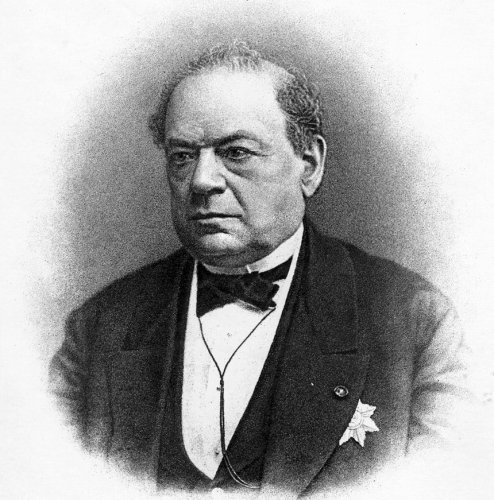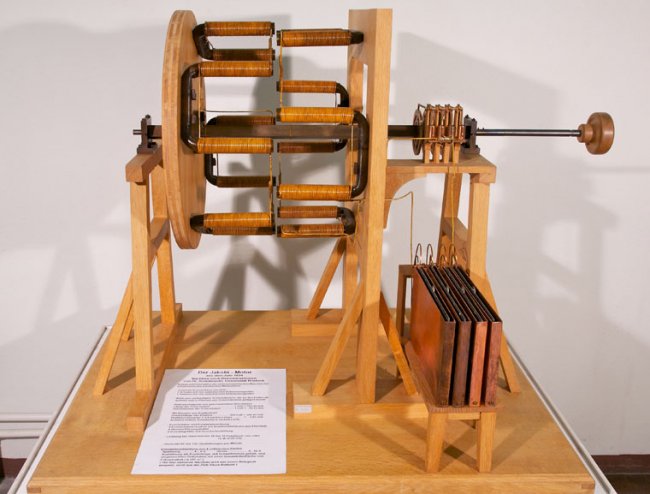Boris Jacobi - creator of the electric motor, the electroforming and the telegraph machine that prints letters
In 1823, a young architect came out of the walls of the famous Göttingen University (Germany), who was destined to become famous in a completely different professional field and in a completely different country. His surname was Jacobi, and from 1835, when he was invited to the post of professor of architecture at the University of Dorpat (now Tartu), he began to be called in Russian - Boris Semenovich.
Boris Jacobi (Moritz Hermann Jacobi) was born on September 21, 1801 in Potsdam. His younger brother Carl Gustav Jacobi became a famous mathematician.
It is possible that Jacobi would have worked in the field of architecture, if not for the fantastic desire for physical research. At first he was fascinated by the improvement of water engines, and then, like a magnet, electricity began to attract him. And in 1834, Europe heard about a new «magnetic machine».
The principle of its operation — and it was an electric motor — was based on the attraction of opposite and repulsive magnetic poles of the same name.The electric motor rotates without stopping, and its main components - a rotating electromagnet and a collector (a special device for switching the current in the coil) - to this day are an integral part of all Electric machines with direct current.
In November 1834, Jacobi sent a report on his engine to the Academy of Sciences in Paris, and in the summer of 1835 he published a detailed scientific memorandum. Later, for this work, he received the title of honorary doctor of the Faculty of Philosophy of the University of Königsberg.
Jacobi's invention aroused great interest in the scientific circles of St. Petersburg, and soon Boris Semenovich himself appeared before the luminaries of the Moscow Academy of Sciences. In addition, he was offered help by the famous Russian physicist and electrical engineer, also a native of German lands, Emilii Kristianovich Zemya.
PF Kruzenshtern, the first Russian world traveler, became the "sponsor" of today's language. With his introduction, Jacobi, together with Lenz, made two machines that were by no means weak at the time—two electric motors.
One of them with a power of 220 W was supposed to turn the paddle wheels of a boat with a crew of 14 people and, in addition, to move it against the current of the Neva for several hours. The speed of the boat was 2.5 km/h.
Thus, on September 13, 1838, the world's first electric ship appeared on the Neva.
In 1839, he managed to increase the power of his engine to 1 kW, and then on a boat he reached a speed of up to 4 km / h.
Jacobi electric motor 1834. The only image of the motor is a steel engraving from 1835. The original motor no longer exists, but a copy is in the Moscow Polytechnic Museum.
Then Jacobi, hand in hand with Lenz, set out on the path of creating the current municipal transport. True, then it was just a kind of cart with an electric motor, equipped with a rechargeable battery.
The passenger had to feel uncomfortable there: there was not much room. In addition, the batteries often failed: the zinc electrode was ten times more expensive than the well-known steam engine.
Once a newly minted citizen of the Russian Empire, Boris Jacobi, discovered that the copper layer applied to the electrode was easily peeled off. Moreover, all the bumps, the smallest scratches, were completely identical.
The scientist, risking the reputation of a forger, decided to hang a copper penny instead of an electrode and saw that all the smallest details were reproduced one to one. That's how it was born electrotype.
In those years, as now, Russia did not shy away from issuing paper notes, but with all the art of engravers, money varied ... Jacobi's galvanization put an end to this.
But the scientist did not put an end to this. Let's look around: the lead-encased underground cable so familiar to our eyes is the work of Jacobi. The known to us "earthing" of electrical appliances and devices is also his child.
To the telegraph machine created by Samuel Morse, Boris Jacobi added a "recorder" — a prototype of the teletype. Boris Semenovich also invested his contribution in defense, creating mines with an electric fuse (mines with galvanic or inductive detonators) and laid the foundation for the formation of galvanization teams in the sapper troops of the Russian Imperial Army. From 1850 he also experimented with arc lamps. He was also the "father" of weights and measures standards.
Boris Jacobi died on March 10, 1874 in St. Petersburg.As often happens, the scientist did not manage to get hold of special riches. However, could not the bust on his tomb, made using electroplating, be considered as such?


